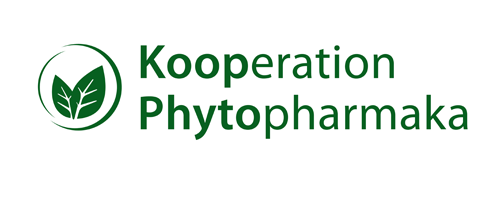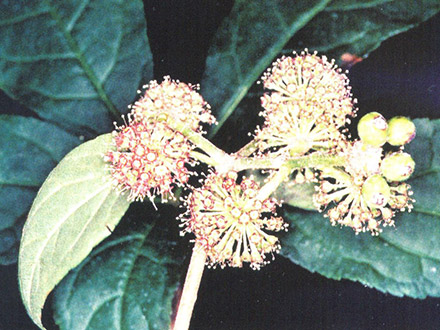Botanical name
Siberian ginseng or Stachelpanax - Eleutherococcus senticosus (Rupr. et Maxim) Maxim.
Family
Aralia family (Araliaceae)
Information about the plant
In English the plant is called eleuthero, but it is hardly known to us because its main distribution is in the Boreal forest (= Taiga) in Eastern Siberia. It extends east to Japan and Sakhalin, south to South Korea and to the northern provinces of China. "Siberian ginseng" is really just the translation of the English plant name associated with the medicinally used plant of (Korean) ginseng (Panax ginseng CA Meyer). In the mountainous northeastern provinces of China, ginseng is used medicinally, another native plant: the Chinese ginseng (also notoginseng, Panax pseudo-ginseng Wall). The commercially available plant parts are called "Siberian ginseng". The Latin senticosus (lat. = full of thorns or spines) refers to the obliquely downwardly barbed bristles protruding from the branches of the 3m high shrub. Even the stems of the 5 lobed, finely serrated leaves are densely covered with spines. The blue-violet (male and female) and the yellow flowers (female) are in clusters, black berry fruits form from the female.
Medicinally used parts of plants (herbal drug)
The dried underground parts consisting of the rhizomes and roots are used. The drug is called "Siberian ginseng". For a long time, only extracts of the drug have been commercially available, since the export of the drug was banned at the time of the Soviet Union. So for a long time we relied on imports of the drug from China and Korea, but today Russian goods are also in the shops.
Constituents of the herbal drug
Siberian ginseng has a very diverse spectrum of secondary metabolites: lignans, hydroxycoumarins, triterpene saponins, steroidal glycosides, phenylacrylic derivatives and polysaccharides. Analogous to materially uniform ginsenosides contained in the roots of Korean ginseng, the ingredients of Siberian ginseng also called "Eleutherosides". This term is best avoided, because it does not come from a uniform group of substances.
Quality of the drug
The quality of Siberian ginseng (radix Eleutherococci) is specified in the European Pharmacopoeia (Ph. Eur).
Medical applications
Recognised medical use
As a tonic for strengthening and toning when fighting fatigue and weakness, declining capacity and ability to concentrate and during convalescence (Commission E, ESCOP). An area of use covered by clinical data (approval) reads: "to preserve and activate the body's own resistance, particularly for unusual physical, emotional and mental stress."
The HMPC has classified Siberian ginseng as a traditional herbal medicinal product (see "traditional use").
Traditional use
Siberian ginseng has been classified by the HMPC as a traditional herbal medicine (§ 39a AMG). Based on many years of experience, Siberian ginseng can be used internally with symptoms of general weakness and fatigue and infirmness.
To improve general well-being (traditional use acc. to § 109a).
Herbal drug preparations in finished dosage forms
- Dried extract in capsules and tablets
- Fluid extract in drops
Dosage
Prepared drugs: see package insert;
Tea infusion: The recommended daily dose is 0.5 to 4g of the drug, which can be consumed at once or spread over three servings throughout the day. Since for a long time only extracts could be traded, the use of the drug to prepare a tea infusion, however, was not established.
Preparation of a tea
Pour 150ml of boiling water over 0.5 to 4g finely chopped or coarsely powdered root and strain after 10 to 15 minutes.
Notes
Up to now, there is no experience on the harmlessness of the use of Siberian ginseng during pregnancy and breast-feeding as well as for use in children under the age of 12.
Side effects
Insomnia, irritability, palpitations, or headaches may occur.
Interactions
None known
References
Herbal drug monographs
HMPC, Commission E, ESCOP, WHO (Vol. 2)
Further literature
Wichtl: Teedrogen und Phytopharmaka, pg. 235
Schilcher: Leitfaden Phytotherapie, pg. 254
Van Wyk: Handbuch der Arzneipflanzen, pg. 132
Kommentar zum Europäischen Arzneibuch (Taiga root, no. 1419)


